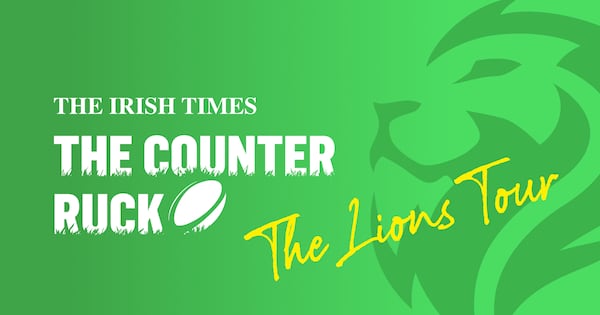William Shakespeare's words "What's past is prologue" are engraved in Washington DC as a gentle reminder that history is but the introduction. Ireland have built huge success these past seasons on three pillars; the one-out runner, the lineout maul and the box-kick. History has been very kind to these three ingredients but then Vern Cotter was paying attention to them also and I assume, as all leaders do in preparation for battle, he asked the crucial question: "what is their centre of gravity?" And, as Clausewitz wrote, a decisive act on same will cause the opponent to yield.
That Irish source of strength are those pillars, manifest in our strong boys: Seán O'Brien, CJ Stander and Robbie Henshaw. In attacking our centre of gravity, Scotland smashed these three guys like never before; oft times in double and triple teams. This stopped Ireland's flow, messed up the recycle and crucially afforded Scotland defensive reset time for another onslaught of tackles.
Paradoxically, Ireland's reaction was to step up their one-out carries, with more and more Irish players sucked into the breakdown. Paddy Jackson oft times ran out of attacking players and was forced into far from ideal places for an outhalf in terms of both his depth and the heavy traffic he was facing.
Contrast that to his try after an hour. The recycle from Conor Murray was very quick and that allowed Jackson to sprint onto the pass, very flat, and with Irish options inside he tricked the defence with his flat line to get through the hole and score.
Stumbling blocks
The concern is that if Scotland managed to attack our centre of gravity, then with bigger stumbling blocks ahead life may to get harder before it gets easier. Also teams conscious of our strengths will select players to attack them; such as opposition lineout defenders.
The Irish lineout maul was a go-to again on Saturday with justification. Referee Romain Poite was particularly patient with Scotland's style; regardless of Keith Earls's try, Ryan Wilson should have been sin-binned at the previous ruck.
Ireland, off scrum and breakdown penalties, gained attacking foothold in the Scottish half. Massive pressure was placed on Rory Best’s darts with the Gray brothers getting into the air just ahead of the Irish target (and they provided 50 tackles). The stats tell us that Ireland lost just two of their 14 lineouts but it is important to ask: what value did Ireland get from those lineouts? Cheap Scottish penalties were not punished and this is especially frustrating; while Ireland were struggling in that first half they could have still done damage with their lineout maul; but didn’t.
Now contrast Ireland's narrow approach and how their centre of gravity was attacked to what the home team managed. Finn Russell at outhalf was clearly under instruction to get the ball out to Stuart Hogg in the wide channels asap.
Nearly every Scottish backline move was a double-skip to Hogg. Russell even managed to skip both Huw Jones and Sean Maitland with an outrageous 20-metre left-hander bounce-pass for Hogg's first try.
For Hogg’s second try, they skipped once more and Ireland had the numbers to cope but didn’t, which is most disappointing. As a side bar, Murray, as noted in the autumn, oft times takes up a position defensively wide out and not behind the ruck; this is part of the defensive system but it does take him away from the action.
Lineout try
That lineout try from Scotland is a tough one to examine; what would you have done? Scotland had nine men in the lineout. Would you match up man for man by putting Irish backs into the lineout. That close to the Irish try line is not a time to be giving Hogg even more space, so it’s hard to get the balance right. However, the Irish forwards could have marshalled the spacing better. Lesson learned.
Interesting how in all battles a sharp decisive counter-attack is one significant tool to arrest the opposition's attack on your centre of gravity. Ireland displayed their version of same when Rob Kearney in particular carried in both hands and charged through tackles. However, this is but one part of the counter-attack. There still appears to be no counter-attack policy that we see in our provinces, especially Connacht.
Scotland built a large stumbling block and as the Six Nations evolves I'm reminded of the concept, if you want things to remain the same, you have to change.
Success is what we want, and so we need to change; maybe only slightly but change we must. Part of that change could be a differently balanced backrow. Hamish Watson is certainly no Seán O'Brien but his style gave huge value to Scotland's needs. As is the case with Josh van der Flier, there's more subtlety in his approach.
Tiernan O’Halloran is certainly worth a look; again it’s a style issue. And then there’s the big style of one-out carriers which has been a hallmark of our success; especially as we approach the opposition try line, we become much more conservative and narrow in attack.
PS: What a wonderful sight it was to bump into 10 Munster Association referees outside Murrayfield; all in tailored kilts with referee Paul Meaney on the whistle!
liamtoland@yahoo.com











